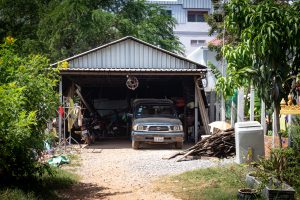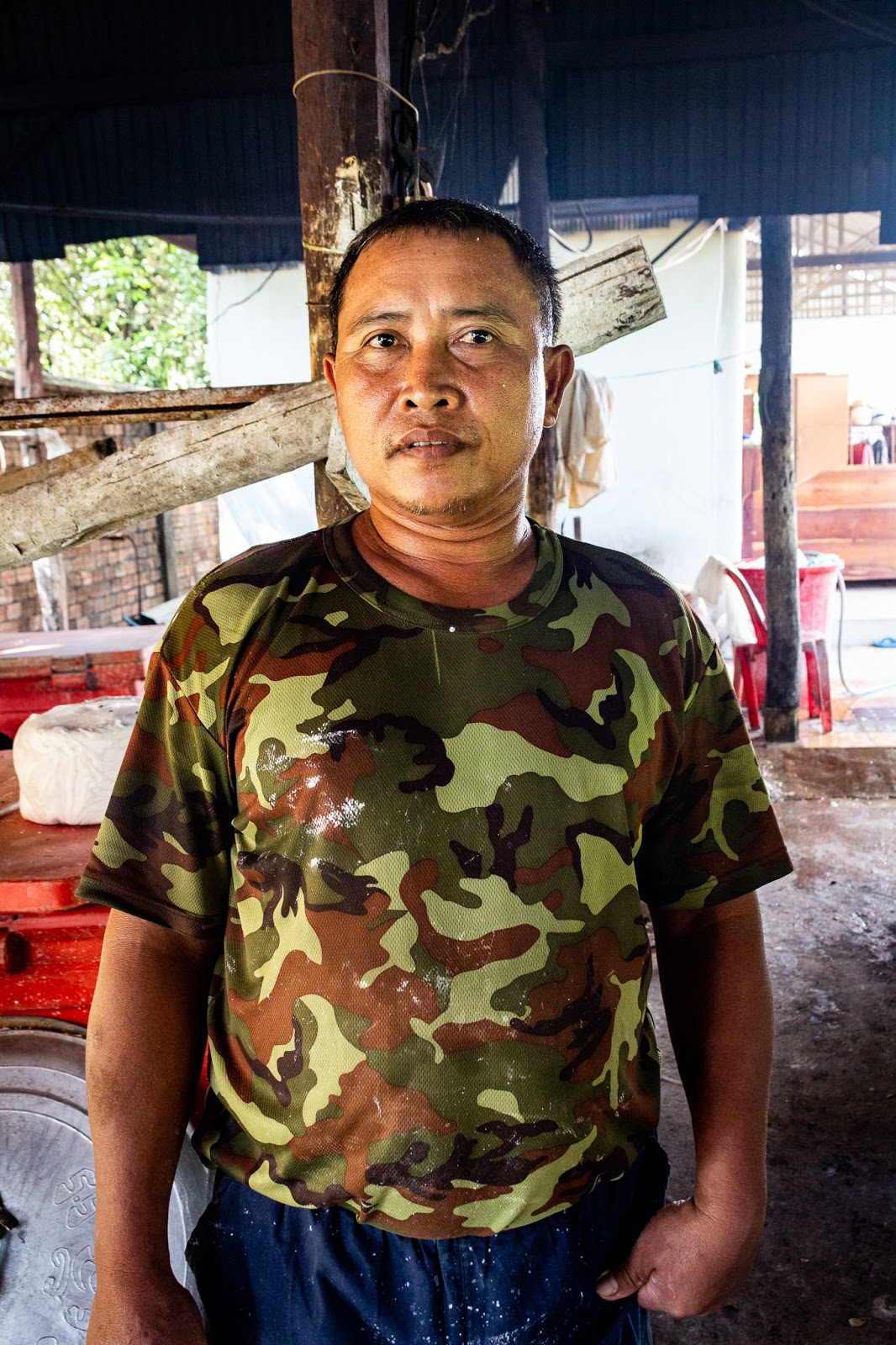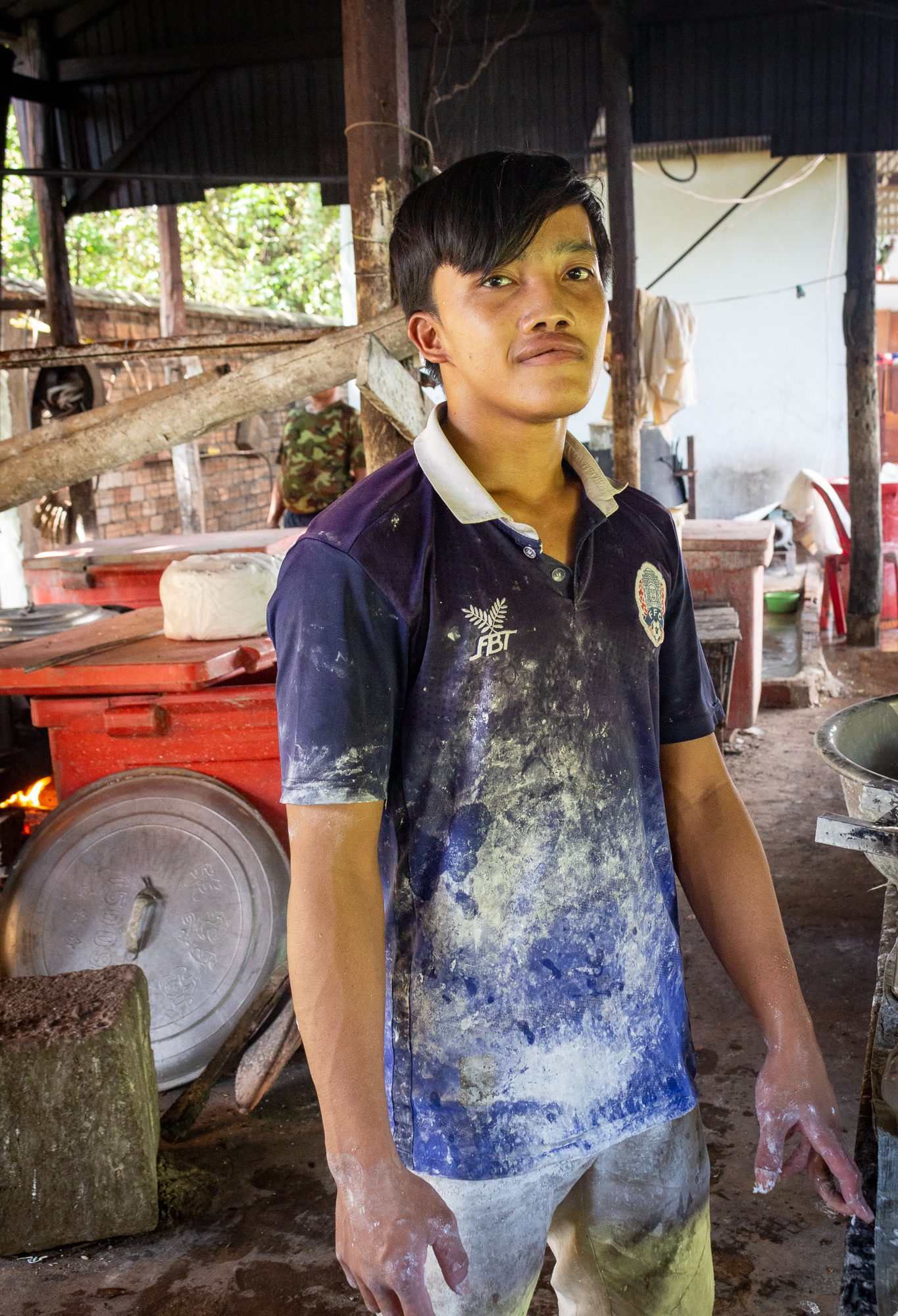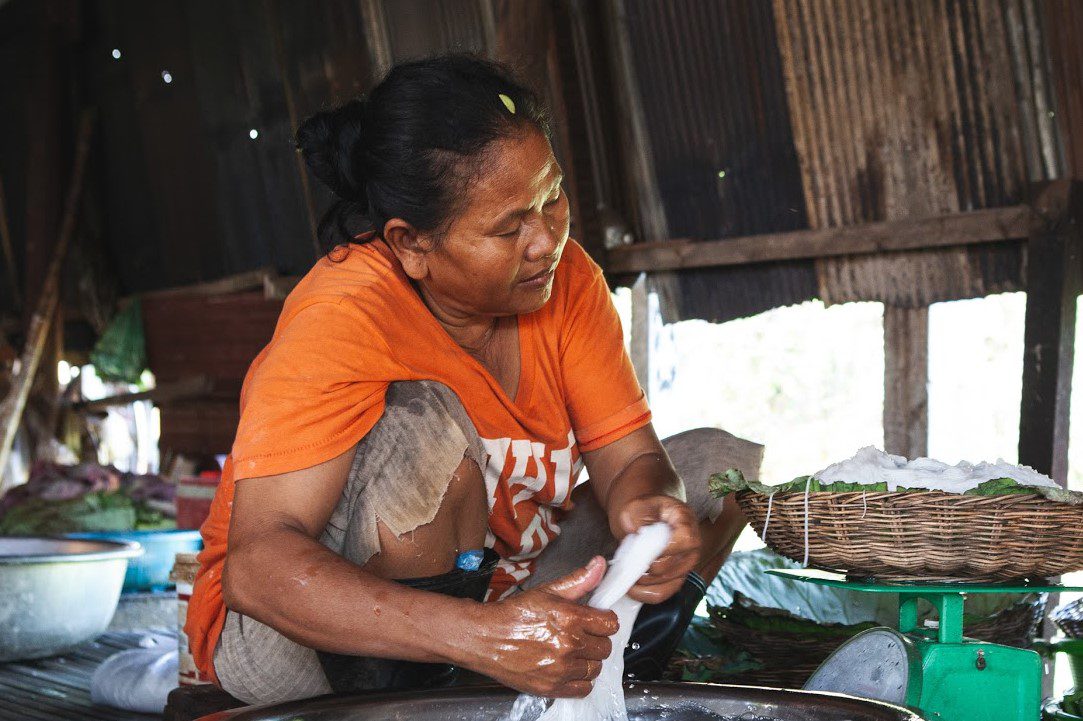By: Chan Reaksmey Sor

One of the most famous and traditional foods in Cambodia is the Khmer rice noodle. This type of food has a white long slimy round shape. Khmer rice noodle is mostly arranged inside one big basket in a flower pattern, with a lotus leaf between the noodles and the basket. Khmer rice noodles are eaten with different types of Khmer soups such as curry and Brahaer, which contains fingerroot and lemongrass that added greenness and yellowness to the fish meat soup. To add the soup’s flavor, different types of vegetables such as cucumbers, bean sprouts, banana tree, water lilies, beans, and Sesbania sesban flowers are eaten with Khmer rice noodle. There are three types of Khmer rice noodles based on its size: they are large, medium and small.
In Siem Reap province, there is a family that hand-make Khmer rice noodles family lives in Teaksen Tboung village, Kouk Chak commune, Siem Reap district, Siem Reap province.
This noodle-making workshop was started by Chan Vanna in 1998 with some help from his wife, Reoun Sambor, his daughter, Vanna Srey Nan, and his son, Vanna Vannate. He is also supported by his neighbor, Lay and his relative, Sopeak. The family has passed the knowledge of the noodle making process from generation to generation. “ I continued the tradition of working as a Khmer rice noodle maker from my parents since 1998,” said Vanna. Every day, this family needs to get up at 3:00 am to make noodles, and finish everything around 2:00-3:00 pm.
There are many steps to make Khmer rice noodles. The first step is ten hours of immersing the rice grain in water using the formula of 200kg of grain rice with 10 kg of salt. The purpose of immersing the rice grain is to make the rice grain softer and to make it expand. Salt is added to dehydrate the water. One type of rice grain that is required to make noodle is a hard type of rice grain. Using hard rice grains helps the noodle not be too tender. The noodle makers buy the rice grain from the market at a price of 2000 riel ($0.5) per kilogram.
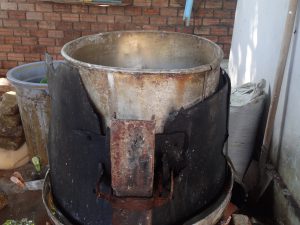

The second step is to grind the rice grain. The noodle makers put the rice grain that has been immersed in water into a machine. After adding a little more water, the rice grain turns into flour. Afterward, the flour is put into fabric bags with some pressure by two to three rocks placed on top for one to two hours. The pressure from the rocks helps the water inside the fabric bags to flow out making the flour stickier and harder.
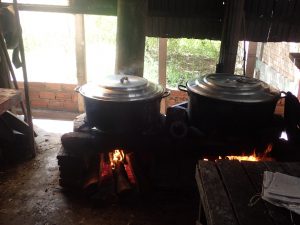
After the flour is hard enough, the noodle makers cut the flour into smaller pieces. Then they boil the flour by putting the flour into boiling water for 45 minutes. Next, they let the flour cool down. After the flour is cool, they put flour into plastic bags of 11 kg for each bag. Putting them in separate bags help them not to stick together.
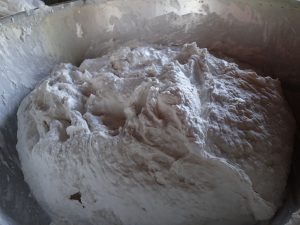
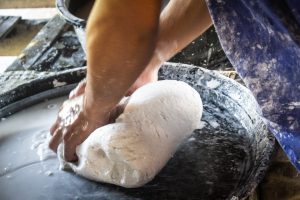
Since the flour is not cooked evenly, the noodle makers use a machine to mix it again. Mixing the flour again also helps the flour become softer. The machine will mix the flour into smaller pieces, so the noodle makers need to mix the flour again into blocks of 5 kg, so they can be fit into the noodle press machine. The noodle press machine has a long cylinder shape and has many holes at the bottom. Below this noodle press, there is a pot that contains boil water. Above the noodle press, there is a long piece of wood. Two of the noodle makers sit on the wood and with their weight, the noodle is pressed out from the noodle press machine into a round slim shape. The noodle falls into the boiling pot. As the noodle falls down, the noodle makers need to make sure that they are not stuck together by using one stick to spread them away from each other.
“The noodle will stay inside the boiling pot for no longer than 3 minutes,” said Sopeak “If it stays longer, it will be too soft.” “The noodle makers need to add cold water to the noodles immediately because it is too hot and takes a lot of time to cool it down.
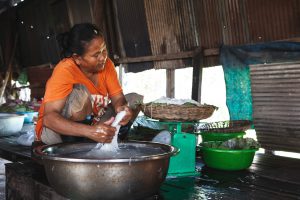
The next step is to shape the noodles into coils that have the same amount and length of noodle. Arranging them into the basket is the last step. The Khmer rice noodle will look like a flower in the basket after the noodle makers arrange them. Between the basket and the noodle, there are some lotus leaves with some holes in them. Using a lotus leaf helps the noodle not stick to the basket. “The holes on the lotus leaf is used to let the water flow through, which makes the noodle even better and tastier,” said Lay.

“Making noodle is really hard work that requires a lot of determination, time and a large number of people,” said Sambor. “If you make a mistake immersing the rice grain, all the noodles you make that day will not taste delicious,” she continued. However, she and her family keep up this business because of love and the passion for keeping the tradition alive, as well as to support their family economy.
